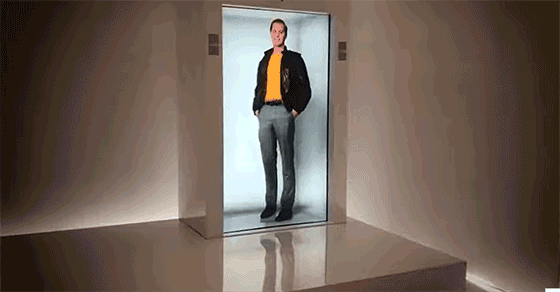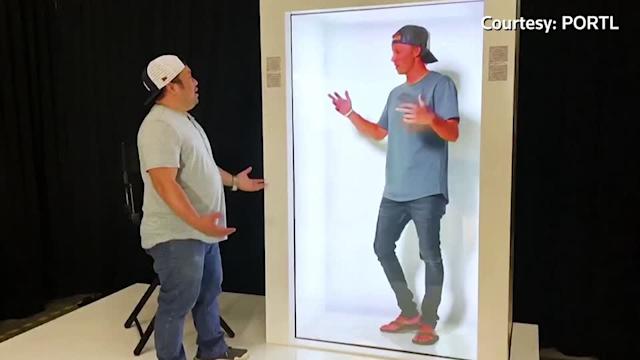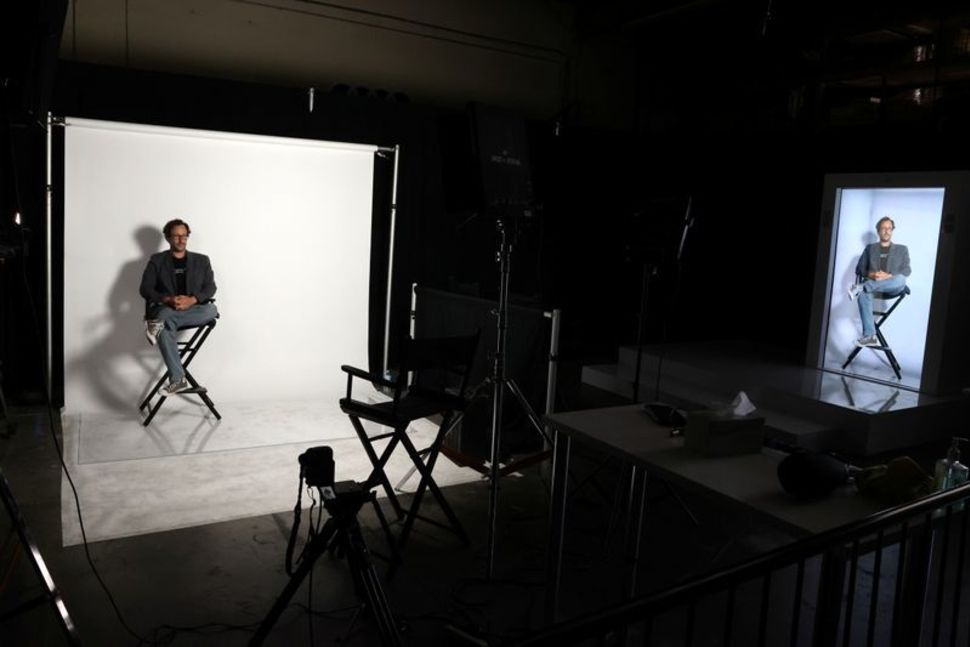Holograms may be the next best way to have a virtual hug.
The following written content from Bryan Hood

FaceTiming With Holograms? The New Portl M Adds a New Dimension to Your Video Calls. The future is 3-D—and it’s shipping this spring.
Portl is ready to add some much-needed dimension to your next video call.
The Los Angeles-based startup has just announced the M, a new set-top device that aims to bring holograms into our homes without the use of either an AR or VR set. It’s still a couple of months away but the machine has the potential to bring everyday communication into the science fiction future.
We’ve all come to rely on video calls more than ever before since the coronavirus pandemic really got going in March 2020. Although Zoom and FaceTime will never replace seeing someone in person, being able to actually see the people we care about when we talk to them has made things a little easier over the last two years. Portl founder David Nussbaum thinks his company’s new hologram viewer can add some life to these calls by allowing you and the person you’re talking to beam yourself into each other’s homes.
Of course, the device won’t actually allow you to beam your body to another location (unfortunately, human teleportation is nowhere on the horizon). But the machine, which is about the same size as a mini-fridge, will let you broadcast a 3-D image of yourself from one M to another. The machine, which can be used in either portrait or landscape modes, features an AI-enabled camera that films you and generates video with simulated depth to it, according to New Atlas. The M also includes 16 GB of system memory, 1 TB of storage and a high-definition touchscreen.
Portl does see a use for its device outside of communication, as much of a selling point as the feature may be. The brand’s website lists several other possible uses, including immersive entertainment, telemedicine, fitness, shopping and—because it is 2022—NFT display.
The startup hopes to launch the M this March, but you can reserve your device now through the Portl website with a $100 refundable deposit. The device is available in two colorways, Dark Matter and Nimbus White, and should cost about the same as a “good flatscreen TV.”
That could turn out to be a bargain the first time you’re able to talk to a hologram of your best friend Read more from Robb
Subscribe here

The following written content Rollo Ross for U.S. NEWS & World Report From an earlier story
Looking for a new way to communicate during the pandemic? A Los Angeles company has created phone booth-sized machines to beam live holograms into your living room.

The device made by PORTL Inc lets users talk in real time with a life-sized hologram of another person.
The machines also can be equipped with technology to enable interaction with recorded holograms of historical figures or relatives who have passed away.
Each PORTL device is seven feet (2.1m) tall, five feet (1.5m) wide and two feet (0.6m) deep, and can be plugged into a standard wall outlet. Anyone with a camera and a white background can send a hologram to the machine in what Chief Executive David Nussbaum calls “holoportation.”
“We say if you can’t be there, you can beam there,” said Nussbaum, who previously worked at a company that developed a hologram of Ronald Reagan for the former president’s library and digitally resurrected rapper Tupac Shakur.
“We are able to connect military families that haven’t seen each other in months, people from opposite coasts,” or anyone who is social distancing to fight the coronavirus, Nussbaum added.
Prices for the machine start at $60,000, a cost that Nussbaum expects will drop over the next three to five years. The company also plans a smaller tabletop device with a lower price tag early next year.
The devices can be equipped with artificial intelligence technology from Los Angeles-based company StoryFile to produce hologram recordings that can be archived. Adding that to the current device brings the cost to at least $85,000.
The companies are promoting to museums, which could let visitors question a hologram of a historical figure, and to families to record information for future generations.
People can feel like they are having a conversation with a recorded hologram, said StoryFile Chief Executive Heather Smith. Read more from U.S. News.




